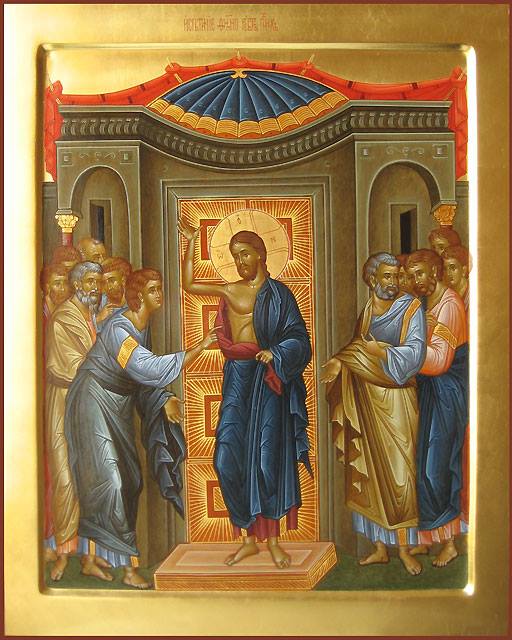 Today is the eighth day of the celebration of the eighth day. Pascha! The Resurrection of our Lord! The Feast of Feasts!
Today is the eighth day of the celebration of the eighth day. Pascha! The Resurrection of our Lord! The Feast of Feasts!
It is a time of absence and presence.
Absence – when the risen Messiah comes to his apostles through locked doors, by divine providence, Thomas is not with them. May he come through the locked doors of our hearts!
Presence – when the risen Messiah comes to Thomas a week later, the doubting apostle gives the proclamation of faith that resounds through the ages: “My Lord and my God!
Absence – when the women come to the tomb, the body of Jesus is not there. “Why do you seek the living among the dead?” the angels ask.
Absence – the disciples on the road to Emmaus do not recognize the Lord.
Presence – they do recognize him in the breaking of the bread, “were our hearts not burning when he explained the Scriptures to us?”
Absence – we do not stand in the presence of the Lord in the same way as the apostles did.
Presence – the Lord is with us in Holy Communion, as he comes to us more intimately than we could imagine.
Absence – “But I tell you the truth, it is better for you that I go. For if I do not go, the Advocate will not come to you” (John 16:7).
Presence – “Then Jesus approached and said to them, “All power in heaven and on earth has been given to me. Go, therefore, and make disciples of all nations, baptizing them in the name of the Father, and of the Son, and of the holy Spirit, teaching them to observe all that I have commanded you. And behold, I am with you always, until the end of the age” (Matthew 28:18-20).
Today the Gospel tells us – “Blessed are those who have not seen and yet have believed” (John 20:29). Our celebration of the Resurrection, therefore, is not simply a historical report or remembrance, it is the truth of God-with-us today, challenging us to live in Christ.
Are not our two Christian greetings exactly the same:
Christ is risen! Indeed, he is risen!
Christ is among us! He is and he will be!
Meditation by Archpriest David Petras
#ByzantineCatholicNewHaven
#StMichaelNewHaven
 Today is the eighth day of the celebration of the eighth day. Pascha! The Resurrection of our Lord! The Feast of Feasts!
Today is the eighth day of the celebration of the eighth day. Pascha! The Resurrection of our Lord! The Feast of Feasts!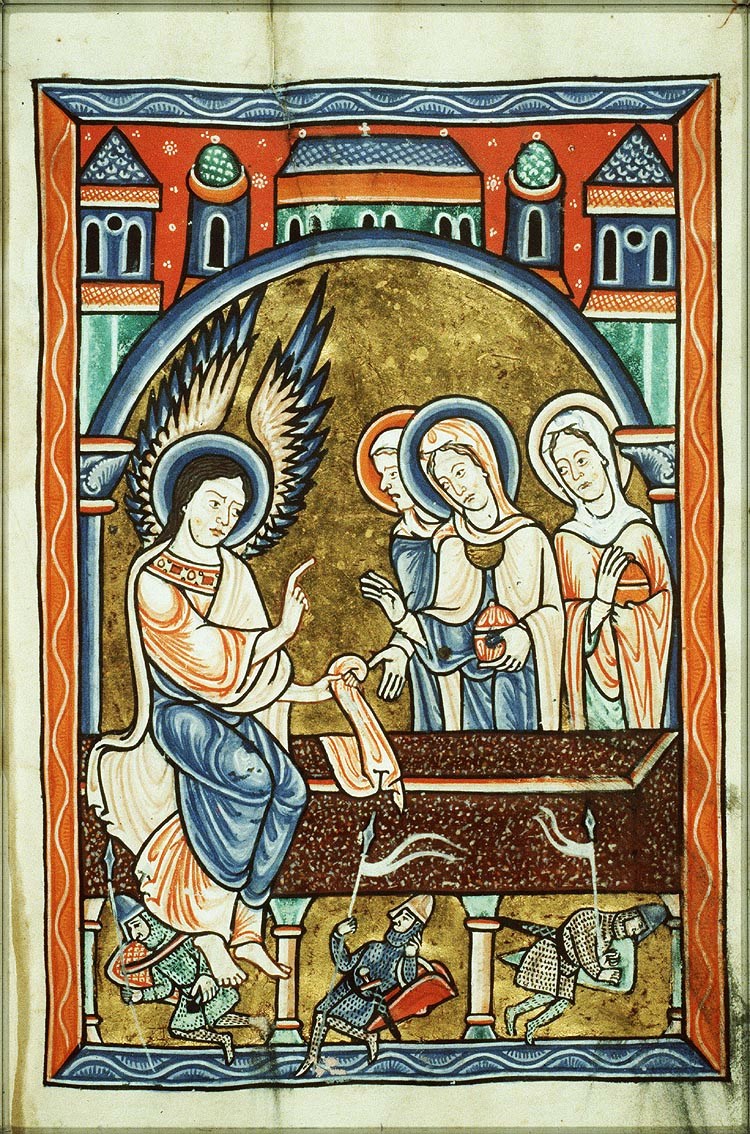 At the Resurrection Matins, there is a procession where the people walk around the church. This procession recalls the way the women went to the tomb. The people stop in front of the Church doors and listen to the priest announce “Christ is Risen!”
At the Resurrection Matins, there is a procession where the people walk around the church. This procession recalls the way the women went to the tomb. The people stop in front of the Church doors and listen to the priest announce “Christ is Risen!”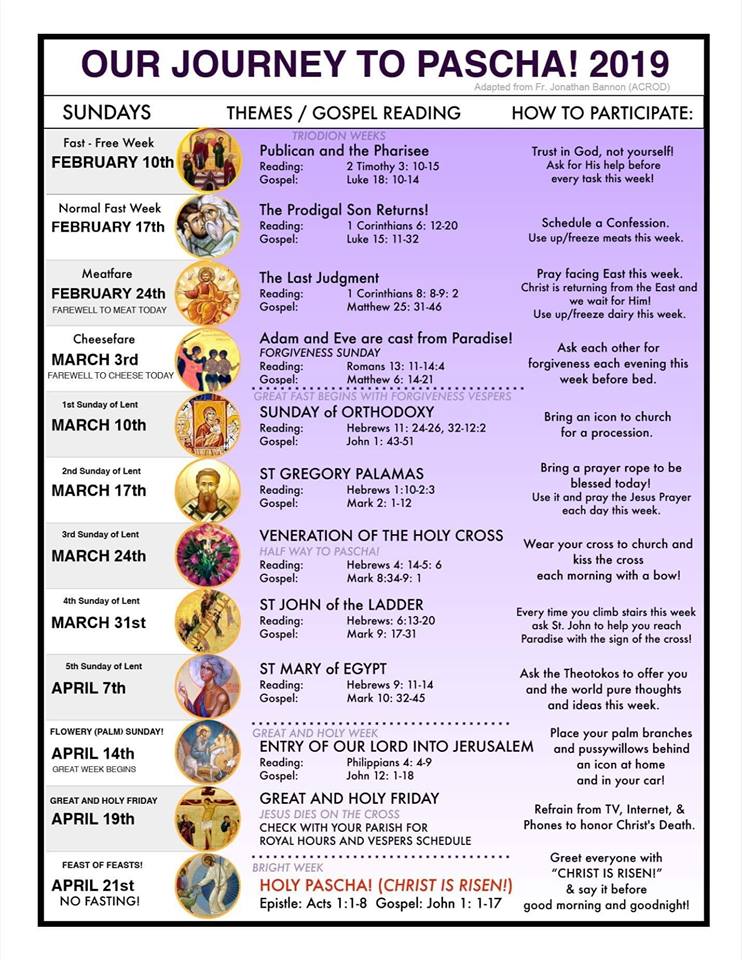
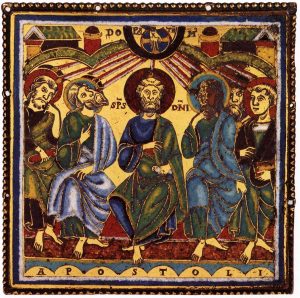 Pentecost is the fiftieth day, “the last and greatest day of the feast.” In the New Testament, this story is told only in the Acts of the Holy Apostles (Acts 2:1-12). On this day, the Holy Spirit came upon the disciples in the form, “as of fire” and they were filled with the Holy Spirit. (Acts 2:3) From this event, some observations can be made:
Pentecost is the fiftieth day, “the last and greatest day of the feast.” In the New Testament, this story is told only in the Acts of the Holy Apostles (Acts 2:1-12). On this day, the Holy Spirit came upon the disciples in the form, “as of fire” and they were filled with the Holy Spirit. (Acts 2:3) From this event, some observations can be made: The Resurrection and the Ascension are two separate concepts. This was known by the Gospel writers, particularly St. Luke. St. John also distinguishes the two, when Mary Magdalene meets the Risen Lord. Jesus says to her, “Stop holding [traditional: “do not cling to me”] on to me, for I have not yet ascended to the Father” (John 20:17). The Resurrection is the restoration to life of his human body, the Ascension is the glorification of Jesus, both God and man, at the right hand of the Father: “… the angels marveled at the sight of a human being more exalted than themselves. Today, the Father receives again in his bosom the one who was in him from eternity” (First sticheron at Psalm 140, Feast of Ascension).
The Resurrection and the Ascension are two separate concepts. This was known by the Gospel writers, particularly St. Luke. St. John also distinguishes the two, when Mary Magdalene meets the Risen Lord. Jesus says to her, “Stop holding [traditional: “do not cling to me”] on to me, for I have not yet ascended to the Father” (John 20:17). The Resurrection is the restoration to life of his human body, the Ascension is the glorification of Jesus, both God and man, at the right hand of the Father: “… the angels marveled at the sight of a human being more exalted than themselves. Today, the Father receives again in his bosom the one who was in him from eternity” (First sticheron at Psalm 140, Feast of Ascension).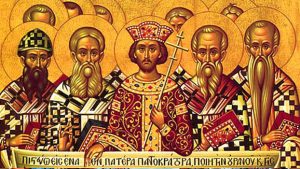 “Holy Father, keep them in your name that you have given me, so that they may be one just as we are” (John 17:11).
“Holy Father, keep them in your name that you have given me, so that they may be one just as we are” (John 17:11).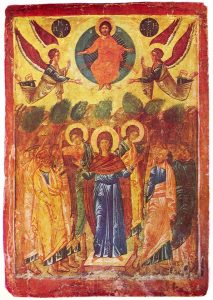 The ascension of our Lord into glory is the seal on his resurrection. Jesus taught Nicodemus, “No one has gone up to heaven except the one who has come down from heaven, the Son of Man” (John 3:13). St. Paul further explains that the ascension is the sign of his victory over the Hades, the kingdom of death, “What does ‘he ascended’ mean except that he also descended into the lower regions of the earth? The one who descended is also the one who ascended far above all the heavens, that he might fill all things” (Ephesians 4:9-10).
The ascension of our Lord into glory is the seal on his resurrection. Jesus taught Nicodemus, “No one has gone up to heaven except the one who has come down from heaven, the Son of Man” (John 3:13). St. Paul further explains that the ascension is the sign of his victory over the Hades, the kingdom of death, “What does ‘he ascended’ mean except that he also descended into the lower regions of the earth? The one who descended is also the one who ascended far above all the heavens, that he might fill all things” (Ephesians 4:9-10).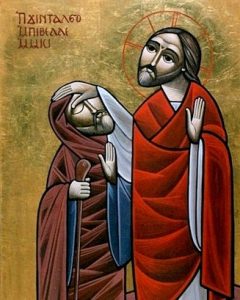 The story of the Man Born Blind is the third Sunday Gospel in Pascha about the mystery of baptism. This gospel is very clear, “Jesus spat on the ground and made clay with the saliva, and smeared the clay on his the blind man’s) eyes, and said to him, “Go wash in the Pool of Siloam” (which means Sent). So he went and washed, and came back able to see” (John 9:6-7). The clay represents the anointing we receive at baptism, making us “Anointed Ones,” (Christs, or Christians) and the washing represents the washing in the water of baptism. The blind man can then see, he is “enlightened,” the name the Church gives to baptism. Two observations: to be truly enlightened, we need humility.
The story of the Man Born Blind is the third Sunday Gospel in Pascha about the mystery of baptism. This gospel is very clear, “Jesus spat on the ground and made clay with the saliva, and smeared the clay on his the blind man’s) eyes, and said to him, “Go wash in the Pool of Siloam” (which means Sent). So he went and washed, and came back able to see” (John 9:6-7). The clay represents the anointing we receive at baptism, making us “Anointed Ones,” (Christs, or Christians) and the washing represents the washing in the water of baptism. The blind man can then see, he is “enlightened,” the name the Church gives to baptism. Two observations: to be truly enlightened, we need humility.